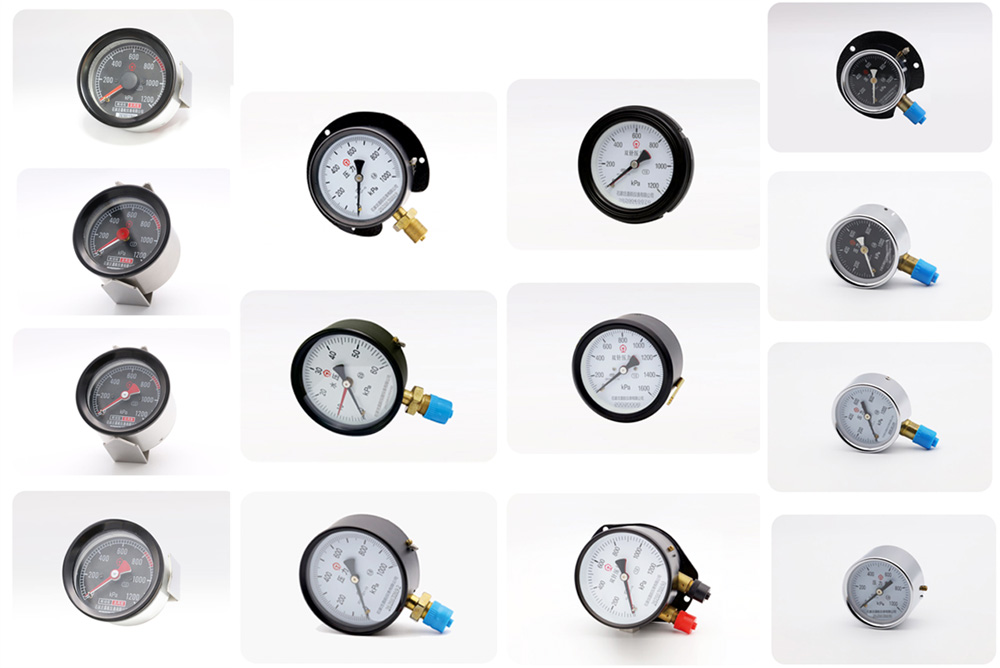
أغسطس . 13, 2024 11:36 Back to list
Understanding the Functionality and Applications of Flange Diaphragm Seal Pressure Gauges in Various Industries
Flange Diaphragm Seal Pressure Gauge Service An Overview
Pressure measurement is a critical aspect of many industrial applications, ensuring that systems operate within safe and efficient parameters. Among the various devices employed for this purpose, the flange diaphragm seal pressure gauge stands out for its effectiveness in harsh environments. This article explores the functionality, applications, and maintenance of flange diaphragm seal pressure gauges, highlighting their significance in modern industrial processes.
Understanding Flange Diaphragm Seal Pressure Gauges
A flange diaphragm seal pressure gauge consists of a pressure gauge coupled with a diaphragm seal. The diaphragm acts as a mechanical barrier between the process media and the internal components of the pressure gauge. This design protects the gauge from corrosive, viscous, or high-temperature fluids, which could otherwise compromise its accuracy and lifespan.
The diaphragm is typically made from materials such as stainless steel, Teflon, or other chemically resistant metals, depending on the nature of the process media. The diaphragm flexes in response to pressure changes in the system, transmitting those changes to the gauge’s sensing element. This allows for accurate readings of the fluid pressure without direct contact between the gauge and the potentially harmful media.
Applications of Flange Diaphragm Seal Pressure Gauges
Flange diaphragm seal pressure gauges are widely used across various industries, including chemical processing, oil and gas, pharmaceuticals, and food and beverage. They are especially vital in processes involving
1. Corrosive Fluids In chemical plants, where aggressive chemicals are common, these gauges provide essential safety and reliability. The diaphragm seal prevents corrosive substances from damaging the gauge, ensuring continuous monitoring.
2. High-Viscosity Liquids Industries that handle viscous materials, such as oils or slurries, benefit from diaphragm seals, which can prevent clogging that typically occurs with standard pressure gauges.
flange diaphragm seal pressure gauge service

4. Hygienic Requirements In pharmaceuticals and food production, maintaining cleanliness is crucial. Flange diaphragm seals can be designed with sanitary fittings, ensuring compliance with health standards while providing accurate pressure readings.
Maintenance and Calibration
To ensure the reliability of flange diaphragm seal pressure gauges, regular maintenance and calibration are essential. Here are some key practices to follow
- Visual Inspection Regularly inspecting the gauge and the diaphragm for signs of wear, corrosion, or damage can help identify potential issues before they lead to failure.
- Cleaning Depending on the process media, periodic cleaning of the diaphragm seal is important to remove buildup and maintain accuracy. Ensure that the cleaning materials are compatible with both the gauge and the media being measured.
- Calibration Routine calibration against a known pressure standard will help maintain the accuracy of pressure readings. This is particularly important in industries where precise measurements are crucial for safety or regulatory compliance.
- Environment Checks Monitoring the environmental conditions surrounding the gauge for excessive vibrations, temperature fluctuations, or corrosive atmospheres can help prolong the service life of the instrument.
Conclusion
Flange diaphragm seal pressure gauges play a pivotal role in ensuring accurate pressure measurement in demanding industrial environments. Their robust design and protective diaphragm make them indispensable in applications involving corrosive, viscous, or high-temperature fluids. By adhering to proper maintenance and calibration practices, industries can ensure the longevity and reliability of these essential instruments, thereby promoting safety, efficiency, and compliance in their operations.
-
Pressure Gauge with Diaphragm Seal & Manifold Reliable Industrial Solutions
NewsMay.18,2025
-
Digital Differential Pressure Gauge Price Precision Sensors & Best Deals
NewsMay.18,2025
-
Wika Diaphragm Seal Pressure Gauge High-Accuracy & Durable Solutions
NewsMay.18,2025
-
Diaphragm Type Differential Pressure Gauges High-Accuracy & Durable Solutions
NewsMay.17,2025
-
Bellow Type Differential Pressure Gauge High Accuracy & Durable Design
NewsMay.17,2025
-
WIKA 700.04 Differential Pressure Gauge Precision Industrial Measurement
NewsMay.17,2025
